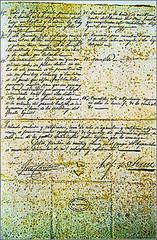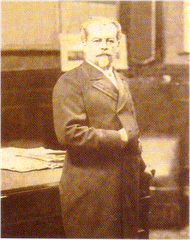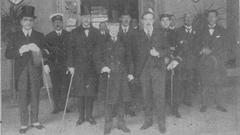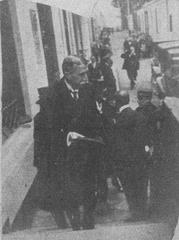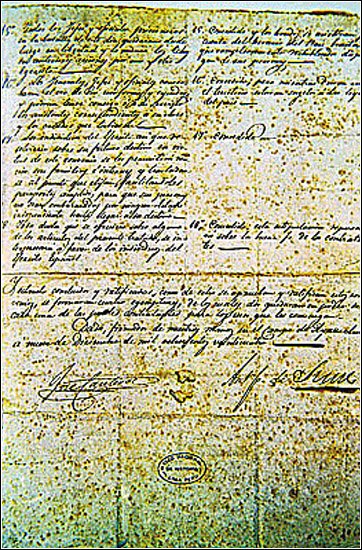
National Museum Of Archaeology, Anthropology, And History Of Peru
Guide to Museo Nacional de Arqueología, Antropología e Historia del Perú
Date: 18/07/2024
Introduction
The Museo Nacional de Arqueología, Antropología e Historia del Perú, located in Lima, is a premier institution dedicated to preserving and showcasing Peru’s rich cultural legacy. Established in 1822, just a year after Peru’s independence from Spain, the museum has grown from its modest beginnings to a comprehensive institution that highlights the nation’s diverse historical and cultural achievements, from early hunter-gatherer societies to the grandeur of the Inca Empire and beyond (MNAHP).
The museum’s development is marked by significant milestones, including contributions from key figures like Don Mariano Eduardo de Rivero y Ustariz, who expanded the collection and emphasized scientific study and classification. Despite periods of political and economic instability, the museum has consistently grown, finding a permanent home in the former colonial mansion of the Counts of Quinta Alegre in the Pueblo Libre district in 1930. Today, it stands as a premier institution for Peruvian archaeology and history, offering a rich, immersive experience for visitors (source).
This guide provides a comprehensive look at the museum’s evolution, visiting hours, ticket information, and tips for making the most of your visit. Whether you’re a history enthusiast or a casual traveler, the Museo Nacional de Arqueología, Antropología e Historia del Perú is a must-visit destination that offers a captivating journey through Peru’s past.
Table of Contents
- The Evolution of Museo Nacional de Arqueología, Antropología e Historia del Perú
- Explore Museo Nacional de Arqueología, Antropología e Historia del Perú
- Visitor Tips
- Getting There
- Conclusion
- FAQ
The Evolution of Museo Nacional de Arqueología, Antropología e Historia del Perú
History of Museo Nacional de Arqueología, Antropología e Historia del Perú
Early Beginnings (1822 - 1836)
The museum’s origins can be traced back to the birth of the Peruvian Republic. In 1822, just a year after declaring independence from Spain, General José de San Martín established the museum. Initially housed in the former Inquisition building, the nascent museum displayed a modest collection of Peruvian artifacts and natural history specimens.
Expansion and Transformation Under Don Mariano Eduardo de Rivero y Ustariz (1836 - 1858)
A pivotal figure in the museum’s early development was Don Mariano Eduardo de Rivero y Ustariz. Appointed director in 1836, Rivero, a renowned scholar and scientist, significantly expanded the museum’s collection and transformed its direction. He enriched the museum’s holdings with archaeological finds from his own expeditions and through acquisitions from private collectors.
A Period of Instability and Relocation (1858 - 1930)
The latter half of the 19th century saw a period of political and economic instability in Peru, impacting the museum’s growth. Despite these challenges, dedicated individuals like the German scholar Ernst W. Middendorf continued to contribute to the museum’s collection. During this time, the museum was relocated several times, reflecting the challenges of securing a permanent home for the growing collection.
A New Home and Renewed Focus (1930 - 1990s)
The museum finally found a permanent home in 1930, moving to its current location - the former colonial mansion of the Counts of Quinta Alegre in the Pueblo Libre district. This move marked a turning point, providing the museum with much-needed stability and space. Throughout the 20th century, the museum played a crucial role in researching, preserving, and exhibiting new archaeological finds, further cementing its position as the leading institution for Peruvian archaeology and history.
Modernization and Expansion in the 21st Century
The turn of the millennium ushered in a period of modernization and expansion for the Museo Nacional de Arqueología, Antropología e Historia del Perú. Recognizing the need to engage a wider audience and provide a more comprehensive visitor experience, the museum underwent significant renovations and expansions. New exhibition halls were added, allowing for a more thematic and chronological display of the vast collection. Technological advancements were incorporated, introducing interactive displays, multimedia presentations, and improved lighting to enhance the visitor experience.
Visitor Information
Visiting Hours
The museum is open to the public from Monday to Saturday, 9:00 AM to 5:00 PM. It remains closed on Sundays and national holidays. It is advisable to check the official website for any changes in visiting hours or special closures.
Tickets
Ticket prices for the museum are as follows:
- General Admission: $10
- Students (with valid ID): $5
- Children (under 12): Free
Tickets can be purchased at the museum entrance or online through the official website. Group discounts and guided tour packages are also available.
Nearby Attractions
While visiting the museum, consider exploring other nearby historical sites and attractions in Lima:
- Plaza Mayor: The main square of Lima, surrounded by historic buildings including the Government Palace and the Cathedral of Lima.
- Convento de San Francisco: A beautiful colonial-era church and monastery known for its catacombs and impressive library.
- Larco Museum: Another must-visit museum in Lima, renowned for its collection of pre-Columbian art.
Accessibility
The museum is committed to making its exhibits accessible to all visitors. It is equipped with ramps, elevators, and accessible restrooms. Wheelchairs are available upon request at the entrance. For special assistance, visitors are encouraged to contact the museum in advance.
Special Events and Guided Tours
The museum frequently hosts special events, including temporary exhibitions, lectures, and cultural performances. Guided tours are available in multiple languages and provide an in-depth look at the museum’s collections. These tours can be booked in advance through the museum’s official website.
Photographic Spots
The museum’s picturesque colonial architecture and beautifully curated exhibits offer numerous photographic opportunities. Popular spots include the grand entrance hall, the Inca artifacts section, and the scenic courtyard. Photography is allowed in most areas of the museum, but the use of flash or tripods may be restricted.
FAQ
What are the visiting hours of Museo Nacional de Arqueología, Antropología e Historia del Perú?
The museum is open from Monday to Saturday, 9:00 AM to 5:00 PM, and is closed on Sundays and national holidays.
How much are tickets for Museo Nacional de Arqueología, Antropología e Historia del Perú?
General admission is $10, students with valid ID pay $5, and children under 12 can enter for free.
Explore Museo Nacional de Arqueología, Antropología e Historia del Perú
Collections and Exhibits
Pre-Columbian Civilizations
This section forms the museum’s heart, showcasing the artistic, technological, and cultural achievements of ancient Peruvian societies.
1. Ancient Peru Exhibit This exhibit takes visitors on a chronological journey through the different stages of pre-Columbian Peru, from the first hunter-gatherer societies to the rise of the Inca Empire. Key highlights include:
- Lithic Period (12,000 - 4000 BCE): Discover tools and artifacts from early hunter-gatherer groups, illustrating their adaptation to the diverse Peruvian environment.
- Archaic Period (4000 - 1800 BCE): Witness the transition to agriculture and the emergence of pottery with displays of early ceramics and textiles.
- Formative Period (1800 BCE - 200 CE): Explore the development of complex societies and ceremonial centers, featuring impressive ceramics from the Cupisnique and Chavín cultures.
- Early Intermediate Period (200 - 600 CE): Marvel at the intricate goldwork and textiles of the Moche and Nazca cultures, known for their sophisticated artistry.
- Middle Horizon (600 - 1000 CE): Learn about the powerful Wari Empire and its influence on art and architecture, with displays of ceramics, textiles, and metalwork.
- Late Intermediate Period (1000 - 1476 CE): Discover the diverse cultures that flourished in this period, including the Chimú, Chancay, and Chachapoyas, each with its unique artistic styles.
- Late Horizon (1476 - 1532 CE): Explore the Inca Empire, the largest and most powerful empire in pre-Columbian America, through its impressive metalwork, textiles, and ceramics.
2. Notable Collections
- Paracas Textiles: The museum boasts a remarkable collection of Paracas textiles, renowned for their vibrant colors, intricate designs, and exceptional preservation. These textiles offer valuable insights into the cosmology, rituals, and daily life of the Paracas people.
- Moche Ceramics: The Moche culture is celebrated for its incredibly realistic and expressive ceramics. The museum’s collection includes a wide range of Moche pottery, depicting everything from everyday activities to elaborate rituals and mythological scenes.
- Nazca Lines: While not physically housed in the museum, the Nazca Lines, enigmatic geoglyphs etched into the desert floor, are an integral part of Peru’s archaeological heritage. The museum provides informative displays and explanations of these fascinating ancient wonders.
- Chavín Culture: The Chavín culture, known for its monumental architecture and complex iconography, is well-represented in the museum’s collection. Visitors can admire stone carvings, ceramics, and other artifacts that showcase the distinctive artistic style of this influential civilization.
- Inca Gold and Silver: The Inca Empire was renowned for its mastery of gold and silverwork. The museum houses a stunning collection of Inca gold and silver objects, including ceremonial vessels, jewelry, and ritual offerings, highlighting the importance of these metals in Inca culture.
Colonial and Republican Periods
Beyond the pre-Columbian era, the museum dedicates sections to illustrate the impact of Spanish colonization and the birth of the Peruvian Republic.
1. Viceroyalty of Peru This section explores the Spanish colonial period, showcasing the cultural fusion and transformations that occurred after the Inca Empire’s fall. Highlights include:
- Religious Art: Discover the influence of Catholicism on Peruvian art through a collection of paintings, sculptures, and silverwork from the colonial period.
- Colonial Furniture and Ceramics: Explore the evolution of furniture design and ceramic traditions during the colonial era, reflecting the blend of European and indigenous influences.
- Portrait Gallery: The museum houses a fascinating collection of portraits of viceroys, dignitaries, and prominent figures from the colonial period, offering a glimpse into the social hierarchy and fashion of the time.
2. Republican Era This section traces the development of Peru as an independent nation, showcasing artifacts and artworks that reflect the country’s evolving identity. Highlights include:
- Independence Movement Artifacts: Explore artifacts related to Peru’s struggle for independence from Spain, including weapons, documents, and personal belongings of key figures.
- 19th-Century Paintings: Discover the emergence of Peruvian national identity through a collection of paintings from the 19th century, depicting historical events, landscapes, and portraits.
- Modern and Contemporary Art: The museum also features a limited selection of modern and contemporary Peruvian art, showcasing the country’s evolving artistic expressions in the 20th and 21st centuries.
Visitor Tips
- Guided Tours: Enhance your experience by joining a guided tour offered in English and Spanish. Knowledgeable guides provide valuable context and insights into the exhibits.
- Photography: Photography without flash is generally permitted in most areas of the museum. However, some specific artifacts or exhibits may have restrictions.
- Museum Shop: Don’t miss the museum shop, where you can find a selection of books, replicas, and souvenirs related to Peruvian history and culture.
- Accessibility: The museum strives to be accessible to all visitors. Ramps, elevators, and accessible restrooms are available.
- Combine Your Visit: Consider combining your visit with other nearby attractions in Lima’s historic center, such as the Plaza Mayor, the Cathedral of Lima, and the Catacombs of San Francisco.
Getting There
- Public Transportation: The museum is easily accessible by bus or taxi from various points in Lima.
- Metropolitano: The nearest Metropolitano station is Estación Central. From there, it’s a short taxi ride or a 15-minute walk to the museum.
- Taxi: Taxis are readily available throughout Lima. It’s advisable to use a reputable taxi company or app-based service.
Conclusion
The Museo Nacional de Arqueología, Antropología e Historia del Perú stands as a testament to Peru’s rich cultural legacy. From its early beginnings to its current status as a premier institution for archaeological research, this museum continues to play a vital role in preserving and showcasing Peru’s fascinating history. Plan your visit today to explore this treasure trove of artifacts and immerse yourself in the captivating story of Peru. For more information, visit the official website.
References
- The Evolution of Museo Nacional de Arqueología, Antropología e Historia del Perú - History, Visiting Hours, and Tickets, 2024, Museo Nacional de Arqueología, Antropología e Historia del Perú
- Explore Museo Nacional de Arqueología, Antropología e Historia del Perú - Visiting Hours, Tickets, and Top Exhibits, 2024, Museo Nacional de Arqueología, Antropología e Historia del Perú
- Visiting the Museo Nacional de Arqueología, Antropología e Historia del Perú - Hours, Tickets, and Tips, 2024, Museo Nacional de Arqueología, Antropología e Historia del Perú
